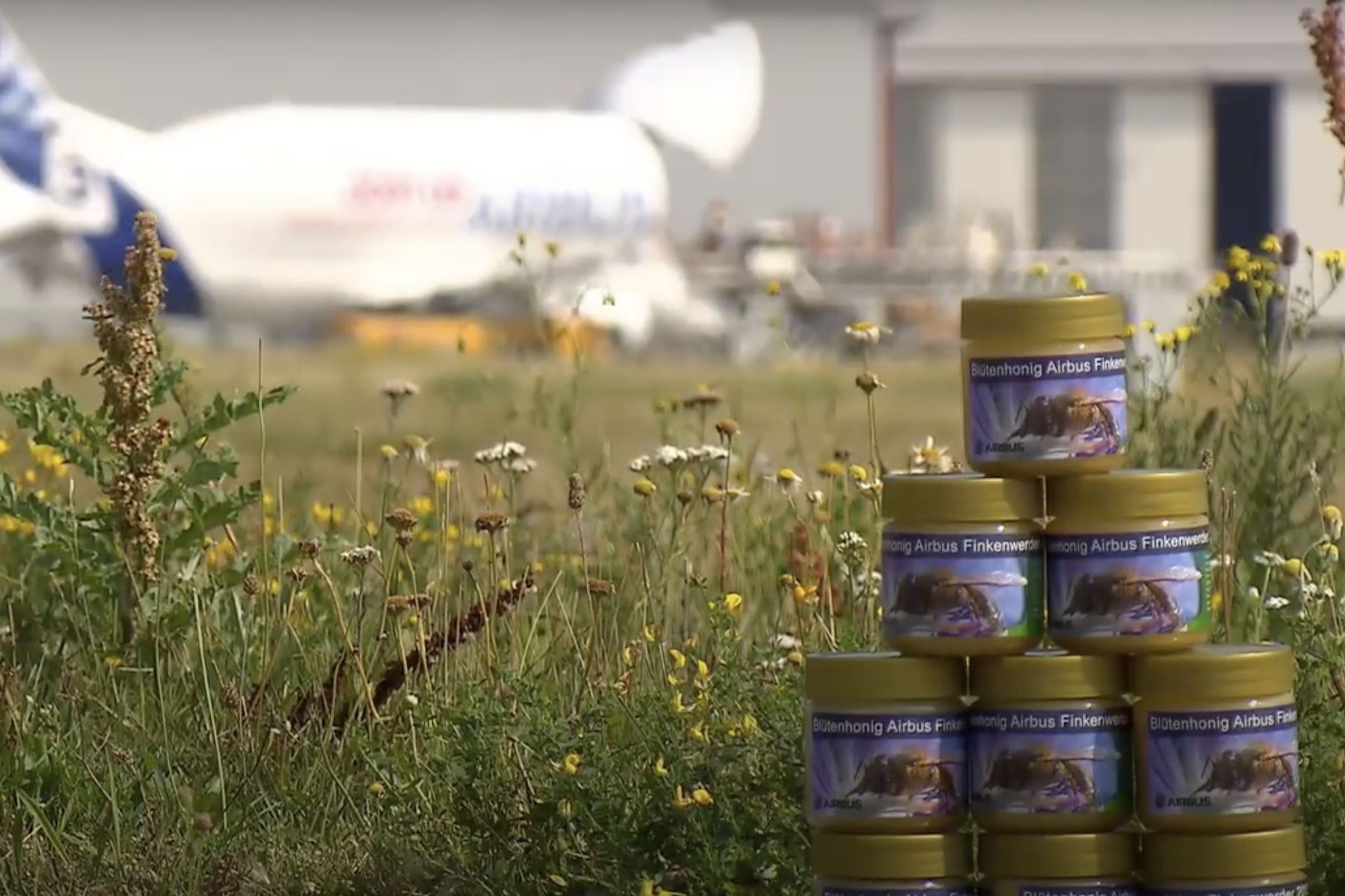Summary Airbus bees help monitor emissions at Hamburg Airport, with honey revealing positive pollution findings. Hamburg Airport partners with the German Wildlife Foundation to boost bee population and habitat. Hamburg Airport is committed to reducing CO2 emissions, achieving carbon neutrality in 2021.
Aircraft aren’t the only thing taking flight at Germany’s Hamburg Airport. For 25 years, bees have helped monitor emissions surrounding the airport. The start of Hamburg Airport's beehives In 1999, mindful of its environmental impact, Airbus introduced a project collecting honey from hives installed at the airport near the Airbus paint shop and next to the runway where the company carried out test flights.

The honey revealed the surrounding areas' soil, water, and air quality. The bees collect pollen and nectar from hundreds of thousands of flowers in the area. An independent laboratory analyzes the honey produced, and the findings from the honey analysis have been overwhelmingly positive.
Chemical deposits in the flowers would be detected in the honey, and the lab tests show that the pollution levels are no higher than off the Airbus premises and even lower than in Hamburg's city center. Tens of thousands of Airbus bees produce more than 160 kilos of honey each year. The honey is not sold but given to clients, suppliers, Airbus staff, and their families.
Over the past 25 years Since 2015, FHG has been involved in Hamburg Airport’s bee project initiated by the German Wildlife Foundation to boost the declining communal bee population in Germany. They have planted flower strips on the airport grounds, serving as a habitat and place of refuge for the bees. Eight colonies of bees are situated close to the runways.
They continue to provide indicators of the quality of the air, the soil, and the flora. Pollen collected by the bees and the honey they produce are examined for pollutants. Lufthansa Teknik and BASF are pioneering artificial sharkskin technologies that deliver dramatic reductions in emissions and fuel burn, German Wildlife Foundation The habitat for wild bees and other insects is becoming scarce, and there is a lack of food sources and nesting opportunities.
The German Wildlife Foundation is committed to urban wild bee protection. In Hamburg and Berlin, they create habitats for insects. In addition, they educate citizens and authorities on what they can do practically against species decline and advise project partners on creating wild bee-friendly green spaces and biotopes.
It started in Hamburg in 2015, with two dedicated partners, the Ohlsdorf cemetery and Hamburg Airport, sown flowering meadows, laid nesting substrates, and examined wild bees, deriving further care steps. Since then, the German Wildlife Foundation has upgraded over 190,000 square meters for wild bees. The carrier said the technology gives it “more confidence and flexibility.
” Hamburg Airport is dedicated to reducing its CO2 emissions In 2021, Hamburg Airport became the first major commercial airport in Germany to achieve this goal of CO2-neutral operations. Hamburg Airport believes the building blocks of CO2-neutral airport operations are reduced energy consumption, innovative technologies, conservation projects, and high-quality offset certificates. With every new facility, project, and acquisition, Hamburg Airport firmly sets its sights on climate protection.
By investing in state-of-the-art technology, regenerative energy, and synergies, Hamburg Airport is securing its CO2-neutral operations for the future. In the long term, the airport is pursuing its goal of completely eliminating carbon dioxide emissions. Other airport apiaries While Hamburg Airport was the first to use bees to examine its emissions, many airports worldwide have done the same.
Because airports are typically surrounded by land to help buffer noise, they’re usually considered unsuitable for residential and commercial purposes. However, the land is perfect for hosting beehives. “By introducing bee hives, airports can now easily monitor their emissions and overall carbon footprint, allowing them to assess their environmental impact whilst making a positive contribution to their surrounding biodiversity,” said Planbee .
In the US alone, nearly 20 airports host beehives, including Wright Patterson Air Force Base . The base has three bee yards, with 16 colonies. The beehives are surrounded by an array of wildflowers, where each colony consists of 30,000 to 80,000 honeybees.
In 2014, when the son of Karen Levin, executive director of the Levin Foundation, noticed honeybee habitats were in trouble across Ohio and the Midwest, she decided to create Propolis Projects under the foundation’s umbrella. There are more than 500 different types of native bees in Ohio. Honeybees pollinate over 65% of food crops.
For the past 25 years, Hamburg Airport, in collaboration with Airbus and the German Wildlife Foundation, has employed bees as bio-indicators monitoring environmental emissions, revealing positive pollution findings. Starting in 1999, Airbus initiated a project by installing beehives at the airport, with its honey analysis showing low pollution levels compared to the city center. This innovative approach continues to help monitor environmental health and support the declining bee population through habitat creation.
In 2021, Hamburg Airport achieved a milestone by becoming the first major commercial airport in Germany to achieve carbon neutrality, underlining its commitment to climate protection. The practice of using airport land for beehives has gained traction internationally, demonstrating a sustainable method for airports to monitor emissions and support biodiversity. The joint venture between GE Aviation and Safran Aircraft Engines is using its expertise to improve efficiency.
.



















